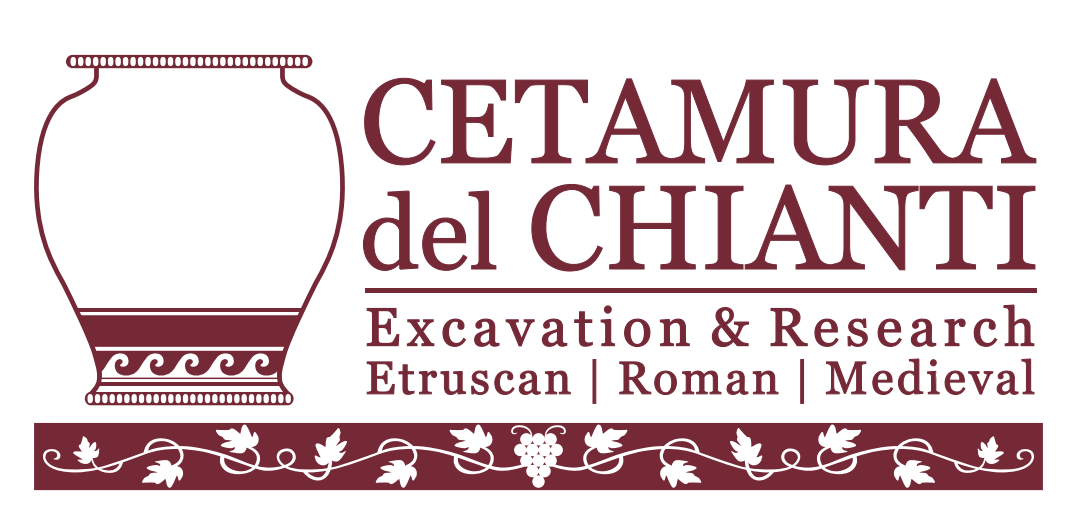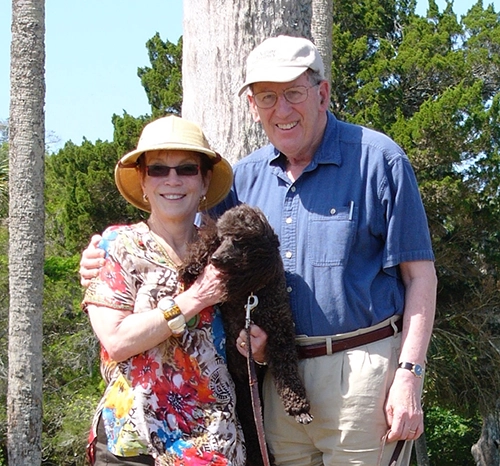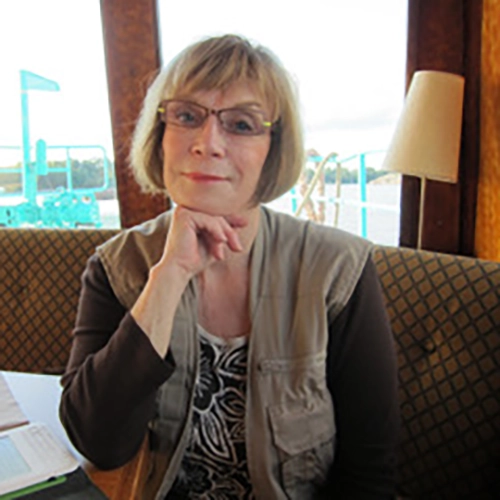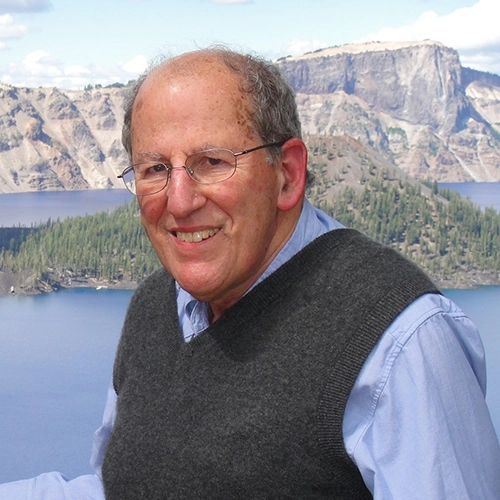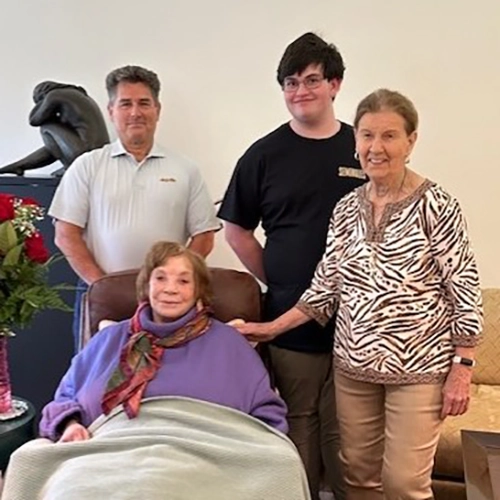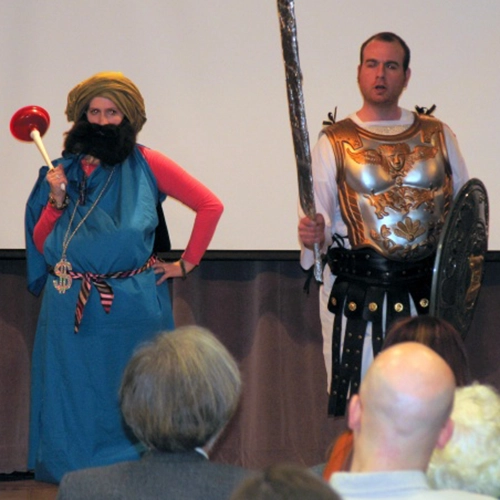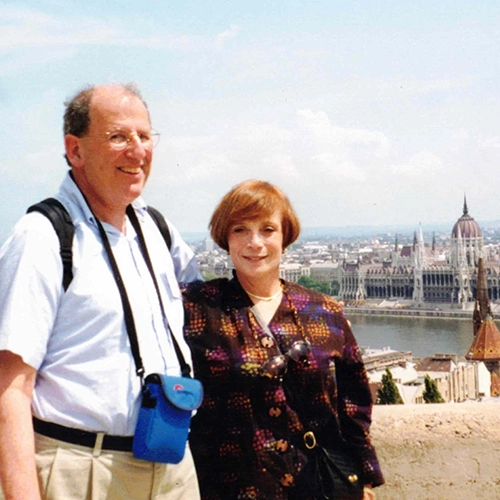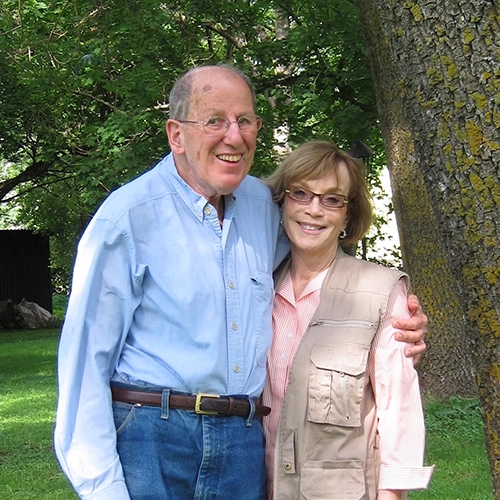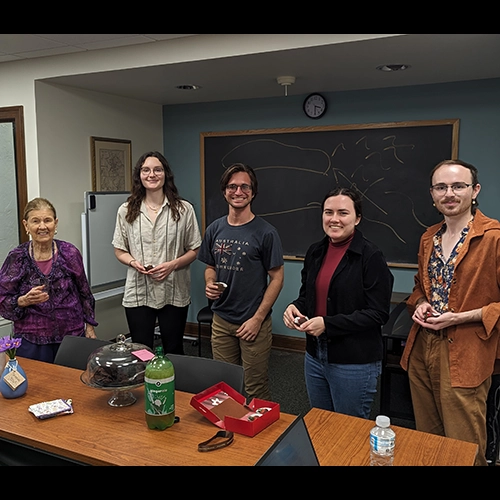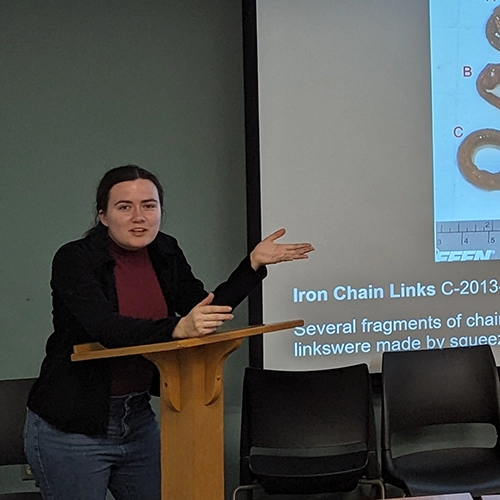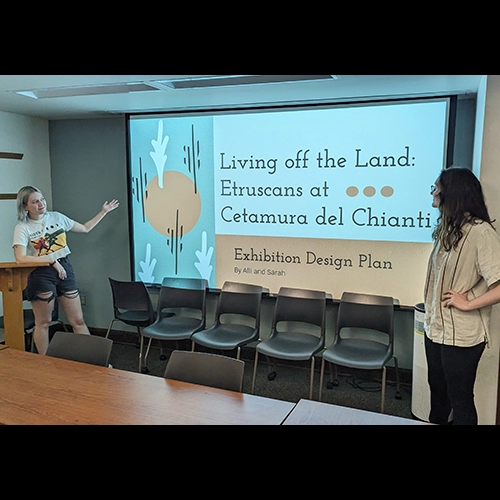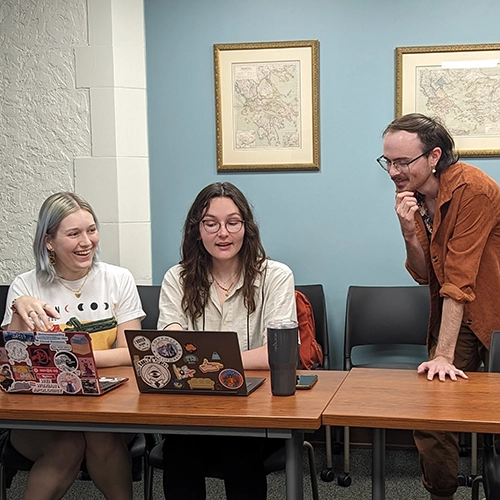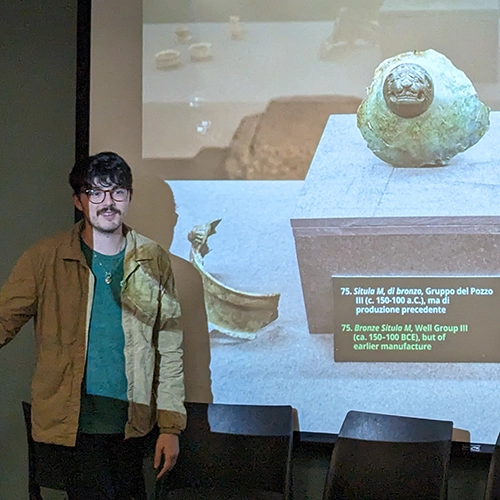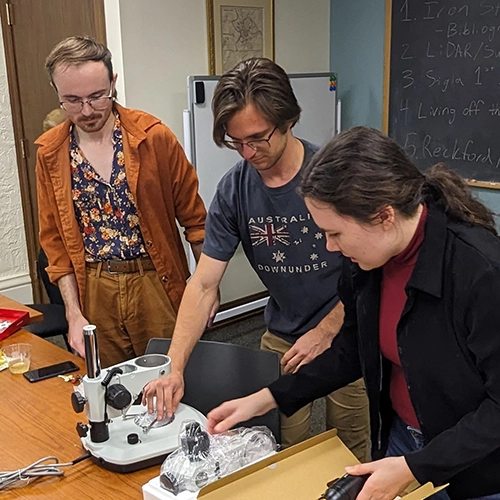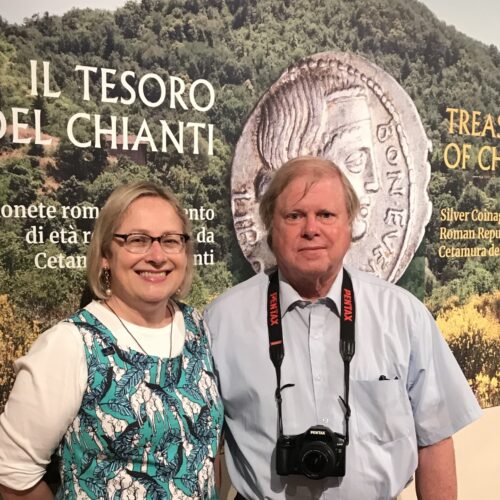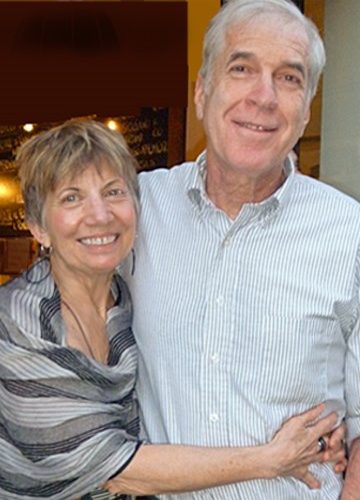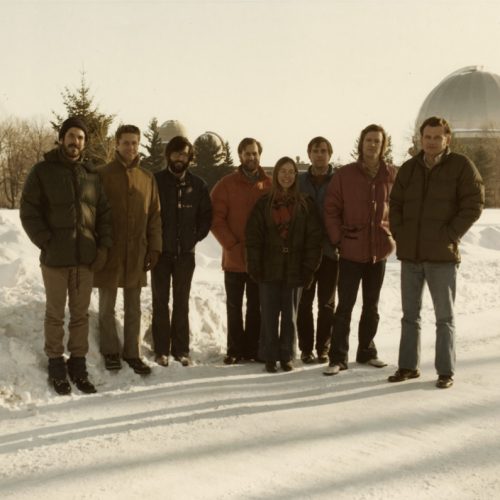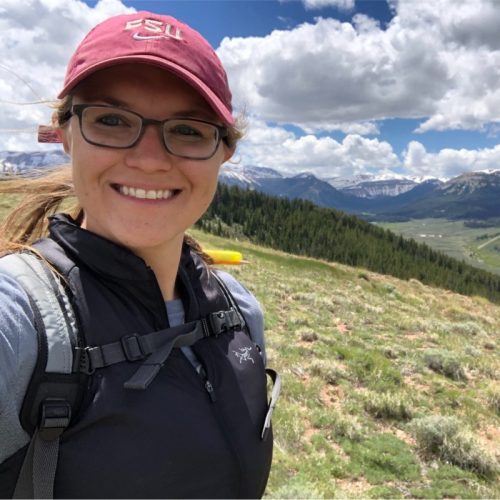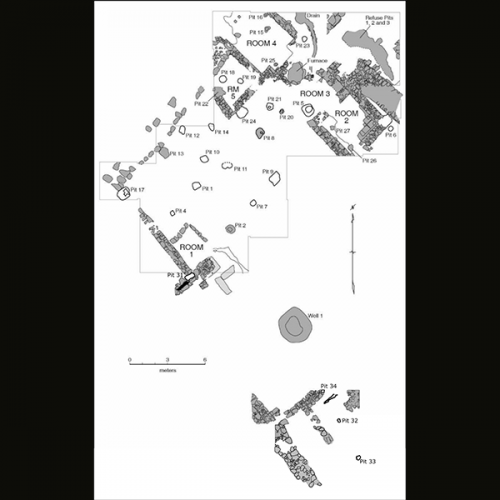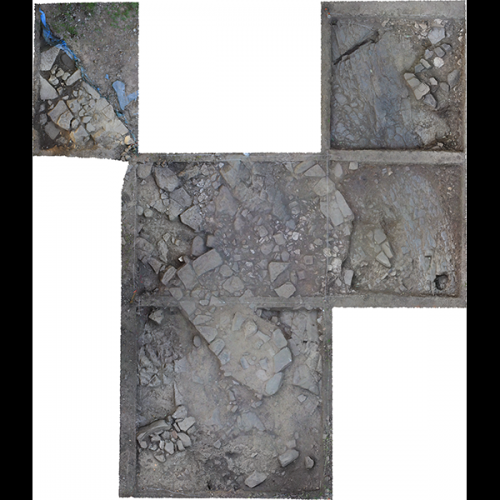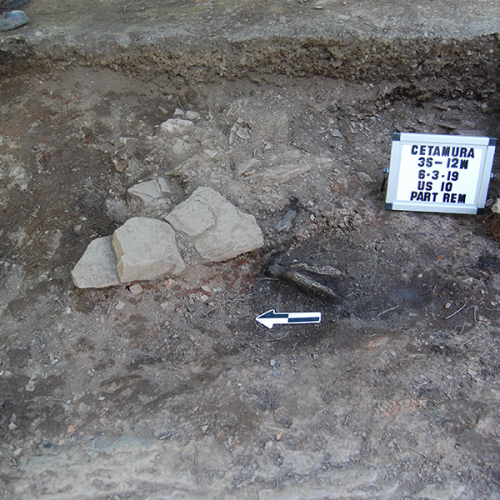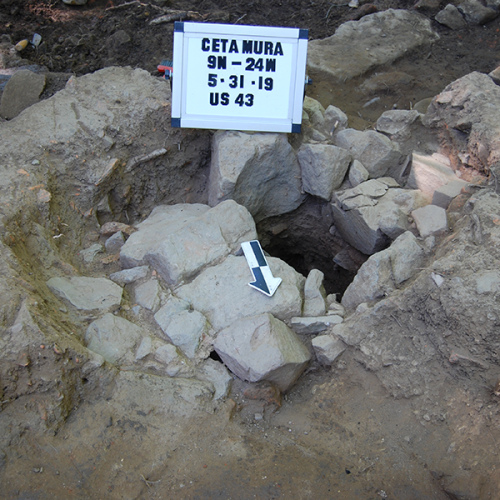NEWS OF CURRENT OBJECTIVES AND RESULTS
Orth Reckford Donation of $1 million will benefit Cetamura!
The Classics Department at Florida State University is greatly enriched by the magnificent donation of $1 million from Charlotte Orth Reckford, wife of Dr. Kenneth Joseph Reckford, who served as Langford Family Eminent Scholar of Classics at FSU in the year 2009. Designated as the Orth Reckford Classics Fund for Research and Archives, the funding will be divided to provide endowment in perpetuity for the whole department and to be used immediately for special projects connected with the excavations at Cetamura and other departmental research.
Dr. Reckford passed away in 2021 at the age of 88. The gift was made possible through the wishes of his widow, Charlotte Orth Reckford. Their son David eloquently described the donation:
“This gift was made by my mother out of abiding love, to honor my late father’s legacy of cultivating courage and a deep reverence for the Humanities. It is also a gesture of gratitude for the unconditional kindness and support with which FSU’s Department of Classics embraced him in the final chapter of his preeminent career and as an emphatic expression of support for the Humanities in general and FSU Classics in particular to advance archaeological and philological research.”
In 1957, Dr. Kenneth J. Reckford earned a doctoral degree from Harvard University in classical philology. After three years as an instructor at Harvard, he found his philological home at the University of North Carolina in Chapel Hill where he served as a celebrated professor for more than 40 years, retiring in 2003. Kenneth and Charlotte married in 1989 and enjoyed many great years of love and friendship together in Chapel Hill, North Carolina, and after Kenneth’s retirement, in Roanoke, Virginia and Tallahassee, Florida. Throughout their marriage, they traveled extensively to foreign lands, where they could nurture their shared love of art, architecture, literature, music and the wider humanities. When they moved to Tallahassee, they chose to live within walking distance of FSU and became intimate friends and staunch supporters of the Classics community at FSU.
Dr. Reckford became a Langford Eminent Scholar at FSU in 2009. He taught a graduate course on Plautus and an undergraduate course on comedy, satire and society. The graduate course included a performance of Plautus’ Curculio (“The Weevil”) starring graduate students arrayed in flamboyant costume, a real highlight of his memorable Langford Conference “Playing Along With Plautus.”
Classics professor Trevor Luke, a close friend of the family, provided information summing up Dr. R.’s scholarship: He specialized in both early imperial Latin poetry and Greek and Roman drama and was especially drawn to Greek and Roman comedy. Highlights of his publishing career include his 1987 study of Aristophanes’ Old-and-New Comedy I: Essays in Perspective (UNC Press) and Recognizing Persius (Princeton University Press, 2009). At the time of his passing he had prepared for publication a follow up volume to his Aristophanes study, this time focusing on the healing power of Greek comedy, its contextual relevance to both past and present readers and audiences, and as tribute to the ever-lasting quality and ever-flowing nature of Aristophanes’ Clouds. To learn more about Dr. Reckford’s life and career, please visit UNC’s tribute to him: https://classics.unc.edu/2021/11/12/kenneth-reckford-in-memoriam/.
Professor Nancy de Grummond, who had been a student in a Latin poetry class of Dr. R. at the University of North Carolina at Chapel hill, commented on his delightful manner in the classroom. “He was someone who made a vivid impression on everyone because he was truly an original. He had a gift and a love for presentation in class and it was absolutely in harmony with his passion for ancient comic and satirical plays by Aristophanes and Plautus. Students have often commented on how his love of satire and silliness was always a gentle thing and that when he made fun, he always included everyone else in the fun.”
His grandson, Kenneth Everett Reckford, immersed in the classical world from an early age by his Poppa (Dr. K.), has developed an enduring love for all things Classics, especially archaeology. He and his family plan to visit the excavations at Cetamura this 2024 season. “Kenneth Everett shows remarkable aptitude for a career in archaeology already at the age of 12,” said Dr. de G. “I can’t wait to see him digging up his first Etruscan artifacts!”
Funds for Cetamura have already been allotted to support special projects and assignments, according to de Grummond. A special FSU seminar on Cetamura, spring 2024, provided a base for organizing a cornucopia of new projects.
Of immediate impact for the Classics department will be the appointment of a graduate assistant, the Kenneth J. Reckford Librarian, to oversee the departmental M. Lynette Thompson Library. Undergraduate researcher Summer Carrier has been appointed as Orth Reckford Archivist for Cetamura.
Six advanced students who have taken courses in Classics have been designated as Orth Reckford Research Fellows. They will research the following topics at Cetamura:
- Jackson Cheplick-Etruscan and Roman waterlogged grape seeds
- Hudson Kauffman-Etruscan and Roman bronze buckets
- Elisa Moscone-Etruscan and Roman pottery stamps
- Holly Piper-Iron artifacts
- Eve Rozier-Coins
- Illeana Sanders-Animal bones
Three undergraduate students will be trained as Charlotte Orth Reckford Docents, to give guided tours of the site of Cetamura and the new museum displays at Gaiole in Chianti: Lilia Abalo, Noland Blain and Corinne Roethke.
The expansion of work at Cetamura includes extending the length of the season in Italy as well as funding staff positions that will be important for supervising the work of the cadre of students.
NEWS OF CURRENT OBJECTIVES AND RESULTS
Goldthwaite Donation Will Fund LiDAR at Cetamura
A generous donation from John Goldthwaite of Asheville, North Carolina, will be used at the Florida State University excavations at Cetamura del Chianti in Italy, to initiate an ambitious project of scanning the Chianti landscape with LiDAR (Light Detection and Ranging). His contribution of $20,000 has been matched by an anonymous donor, and the work will begin in early April on the hill of Cetamura and immediately surrounding areas. Collaborating entities in Italy are the firm of ATS Archeo Tech & Survey (of Monteroni d’Arbia, Siena) and the archaeological cooperative of Ichnos: Ambiente, Archeologia e Sperimentazione (of Montelupo Fiorentino).
The hope is to reveal in the heavily wooded areas around the site remains of other structures that may help in understanding the population density and nature of habitation around Cetamura and in Chianti in general in the Etruscan, Roman and medieval periods.
John’s interest in using technology to advance learning at Cetamura stems from his years of experience as a research scientist at Georgia Tech, where he worked on developing various assistive technologies. John first came to Cetamura in the summer of 2017 with his then fiancée Lora Holland, lab director and long-time collaborator for research at the site. After joining a group effort that season to do ground reconnaissance in the area amid thick underbrush and trees, it occurred to him that using LiDAR technology would be a much more efficient and effective way to gain new insights into remains of structures both above and below ground. This idea gained momentum in succeeding years, as he began a discussion of the possibilities at Cetamura with Kurtis Butler, the Cetamura cartographer, in 2022. Both he and Lora are very excited about the future of Cetamura after LiDAR, and are thrilled to make this dream for Cetamura become a reality
NEWS OF CURRENT OBJECTIVES AND RESULTS
Bucher-Loewenstein Pledge Provides $100,000 For Museum Internships
A pledge of $100,000 for museum internships in Italy has been made by Suzanne Bucher in memory of her husband Robert Loewenstein [a.]. The internships will be used in connection with the Cetamura excavation field school and the Florida State University Study Abroad Program in Florence.
WHAT THE INTERNSHIPS PROVIDE
This generous gift of internships provides students with experience visiting and evaluating great museums in Florence and participating in the planning for opening a museum for Cetamura, which may happen in the near future. Museum Designated in Gaiole – Cetamura del Chianti Excavations and Research. They are tasked with designing and mounting an exhibition in the FSU Study Center, in the new Fine Arts Gallery of the Palazzo Bagnesi in Florence. To fill out their experience and training for museum work, they excavate at Cetamura for 4 weeks where they handle and study artifacts that are freshly excavated. They are also trained to give presentations of the site and of museums.
The Internships for the summer of 2022 will cover all expenses for the combined Cetamura-Florence program, a value of $8085. The awards will continue over a 5-year period until 2026. For further details, see Bucher-Loewenstein Internship.
ABOUT SUZANNE BUCHER
Suzanne Bucher has spent her life making art. She experiences the world with the eye of an artist and the hand of a maker. In a wonder filled dialogue with the visual world she asks: “What is it? How was it made and why?” Her questions and insights have supported creativity in all those around her, in the sciences and the arts.
By funding the Bucher-Loewenstein Museum Internship in Classical Archaeology, Suzanne creates the opportunity for future archeologists to ask these very questions about objects and materials of the past. These artifacts inform the understanding of life in the past but can also inspire art that is created in the present. Suzanne’s art has often expressed this connection and helping students to discover more about the look and feel of the past brings her artistic journey full circle.
ABOUT ROBERT LOEWENSTEIN
Dr. Robert Loewenstein was an astronomer at the University of Chicago’s Yerkes Observatory in Williams Bay, Wisconsin, from 1974 to 2014. His scientific work focused on measuring the amount of infrared light from planets and galaxies. His creative energy was directed at solving difficult technical problems to advance the burgeoning field of infrared astronomy. Bob passed on earlier this year, in 2021.
Bob was a founding member of the “Yerkes Infrared Group”, astronomers who pioneered the use of aircraft to fly high above the water vapor in the atmosphere to better detect the infrared light that was revealing unknown objects in our galaxy and beyond. This exciting new search for infrared signals took him to the South Pole where he helped to found CARA, the Center for Astrophysical Research in Antarctica. The Center for Astrophysical Research in Antarctica – NASA/ADS (harvard.edu)
During his expeditions to the South Pole scientific station, Loewenstein developed software needed for instrument control and for data analysis in this groundbreaking research. He built systems that allowed astronomers at the South Pole to communicate across the globe before the advent of satellite networks.
Extending this interest in communications he was one of the first scientists to remotely control a large ground-based telescope over the internet. He is honored by having a mountain named for him, Loewenstein Peak, in Victoria Land of Antarctica.
Bob was an enthusiastic science communicator and believed public outreach was important for all ages. He had varied interests including, art, music and movies.
Bob and Suzanne shared a love of nature that took them outside in all seasons and all over the world. They always found ways to bring others along on their great adventures [b.].
BUCHER-LOEWENSTEIN SCHOLARSHIP RECIPIENTS, 2014-2015
Suzanne Bucher first began to sponsor students with scholarships to the Cetamura program in 2014.
The first recipient was an undergraduate student, Cheyenne Tempest, in 2014. Cheyenne received her B.A. in Classical Archaeology and Anthropology from FSU in 2015. After a stint working for PaleoWest in Colorado, she has entered the M.A. program in Anthropology and Archaeology at the University of Colorado in Denver. She says regarding the B-L scholarship:
“I was the first recipient of the Bucher-Loewenstein Scholarship in 2014 and I will always be so thankful for their generosity and support! The funding from this scholarship allowed me to put years of education into practice and achieve a lifelong goal and dream. I got to be an archaeologist. It also allowed me the opportunity to travel internationally and see wonderful sites; the experience I gained at Cetamura greatly prepared me for my work in archaeology and without the support of the Bucher-Loewenstein Scholarship, my participation would not have been possible and I will forever be so thankful for their contributions and the impact it had on this first-generation college graduate [c.].”
In 2015, the second recipient of the B-L Scholarship was Rachel Wood, a graduate student. Rachel completed her MA in Classical Archaeology in 2018 and is enrolled in the Ph.D. program in Archaeology at UCLA. In her summer as a B-L scholar, she was put in charge of a trench in which was found the greatest of all discoveries of Cetamura, a cache of 194 silver coins of the Roman Republic recently featured in an exhibition in Siena as the Treasure of Chianti. Treasure of Chianti: Silver Coinage of the Roman Republic from Cetamura del Chianti – Cetamura del Chianti Excavations and Research
Here is what Rachel says about the B-L scholarship:
“The Bucher-Loewenstein scholarship that I received in 2015 provided me with an amazing opportunity, and I will always be grateful that I received it. Without the scholarship, I would have never been able to go overseas on my first excavation or discover my love for archaeology and, especially, fieldwork. Receiving the scholarship and excavating at Cetamura helped cement my future in archaeology and academia.”
NEWS OF CURRENT OBJECTIVES AND RESULTS
The Medieval Castrum
In the last 4 years (2015-2019), much of the focus at Cetamura has been on the area on Zone I around Well no. 1, in an attempt to learn more about the surroundings of the Etruscan well [a.]. So far in trenches both north and south of the well, the new revelations have to do with the medieval castle. It has become clear that documents of the 12th century from the Badia a Coltibuono that refer to the site of “Civitamura” as a castrum relate to extensive and often very substantial foundation walls of a castle. A striking find within the castrum trenches in 2019 was the jaw of an equine, seemingly intentionally deposited next to an area of firing activity, perhaps a hearth or forge [b.]. A recent internet article provides a narrative for the 12th century situation: https://artsandsciences.fsu.edu/article/classics-professors-help-medieval-castle-returns-light-tuscan-countryside
New drone photos from 2019, made by Devid Savegnago, show the foundation walls of the castrum very clearly [c.].
North of the well, the work continues to seek to define a huge cavity carved down into the bedrock, which may be a quarry (perhaps of Etruscan times). It contains a massive fill certainly of Roman and medieval material, and probably of Etruscan as well. So far it has revealed evidence of two phases of the castrum [d.].
